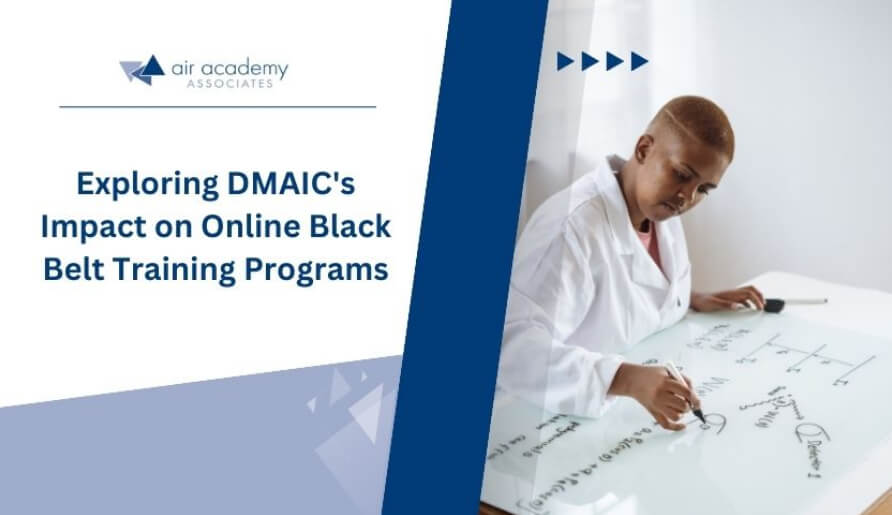
The DMAIC (Define, Measure, Analyze, Improve, Control) methodology is data-driven for improving business processes. Developed by Six Sigma Black Belts, it provides a structured framework to identify and solve problems.
DMAIC is integral to Lean Six Sigma – a methodology that combines Six Sigma’s focus on reducing variation and defects with Lean’s emphasis on eliminating waste. They enable organizations to enhance quality, speed, and customer satisfaction.
Online Black Belt training has gained immense popularity recently due to its flexibility and accessibility. It allows professionals from various industries and backgrounds to obtain the prestigious Six Sigma Black Belt certification while continuing their daily routines. Moreover, online courses often provide learners comprehensive study materials, interactive modules, and live.
Origins of the DMAIC Methodology
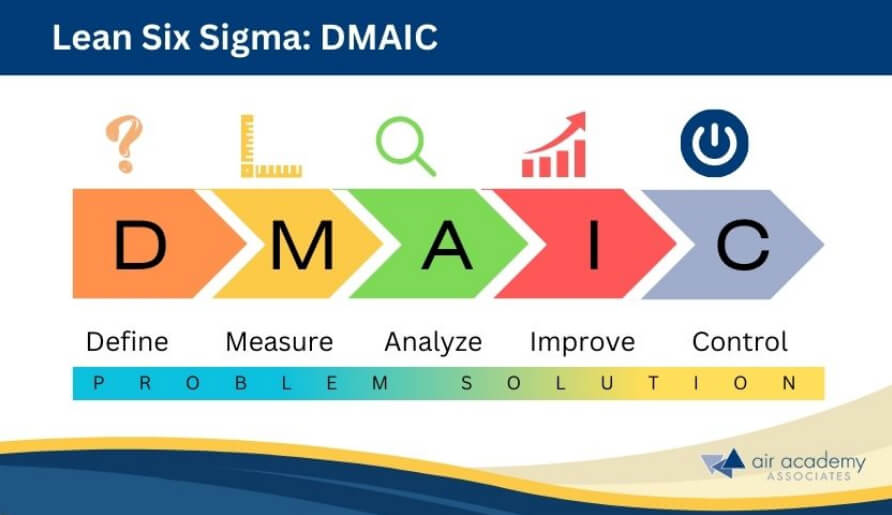
DMAIC emerged in the mid-1980s as large companies like Motorola and General Electric adopted Six Sigma strategies. It provided a data-driven approach to improve processes and reduce defects incrementally.
The methodology standardized the problem-solving process to replicate improvements across the organization. This allowed companies to build internal capabilities and culture to drive ongoing improvement.
DMAIC provided the backbone for achieving dramatic gains in quality and efficiency. Over time, it became a cornerstone of Six Sigma training and implementation.
While DMAIC was developed for manufacturing, it is now applied across all functions, including HR, IT, marketing, finance, and more. The principles are broadly applicable for systematically enhancing processes in any industry.
The 5 Phases of DMAIC
The DMAIC methodology consists of five core phases:
1. Define

The first phase clearly defines the process improvement project. This involves:
- Outlining the problem statement and goals
- Determining project scope and timeline
- Identifying key stakeholders
- Defining metrics to measure performance
- Determining resources required for the project
Activities in the Define stage aim to formalize the improvement initiative and set it up for success. Standard tools include project charters, SIPOC diagrams, process maps, and stakeholder analysis.
Clearly defining the project’s purpose and expectations is crucial. This prevents scope creep and misalignment later on. The Define phase aligns the Six Sigma team and gets buy-in from sponsors.
2. Measure

With the project defined, the next phase focuses on measurement. The goal is to establish baseline metrics for the as-is process.
Data collection at this stage helps determine the following:
- Cycle times
- Defect rates
- Costs
- Output
- Capacity
- Customer satisfaction
Understanding current performance is essential for identifying improvement opportunities in later phases. It also provides a baseline to compare future improvements against.
Some common measurement tools include data collection plans, sampling strategies, questionnaires, operational metrics, and capability analysis. Valid statistical data enables data-driven decision-making.
3. Analyze

The Analyze phase uses the collected data to identify root causes of defects, waste, and bottlenecks in the process.
The Six Sigma team prioritizes causes based on impact, frequency, and other factors. The goal is to pinpoint vital sources of variation and defects.
Some analysis tools include:
- Cause & effect diagrams,
- Value stream mapping,
- Waste analysis,
- Hypothesis testing
- Correlation analysis,
- Design of experiments
The Analyze stage relies on quantitative data and qualitative insights from frontline workers. Statistical analysis combines with process knowledge to reveal improvement opportunities.
4. Improve

With causes determined, the team brainstorms potential solutions in the Improve phase. Ideas are evaluated, and the most promising changes are selected for implementation.
Solutions may involve:
- Process redesign
- New technology
- Automation
- Training
- Policies
- Layout changes
- Supplier integration
Changes are first tested on a small scale through piloting. This validates their effectiveness before full deployment. Successful improvements that enhance customer value are then standardized across the organization.
5. Control
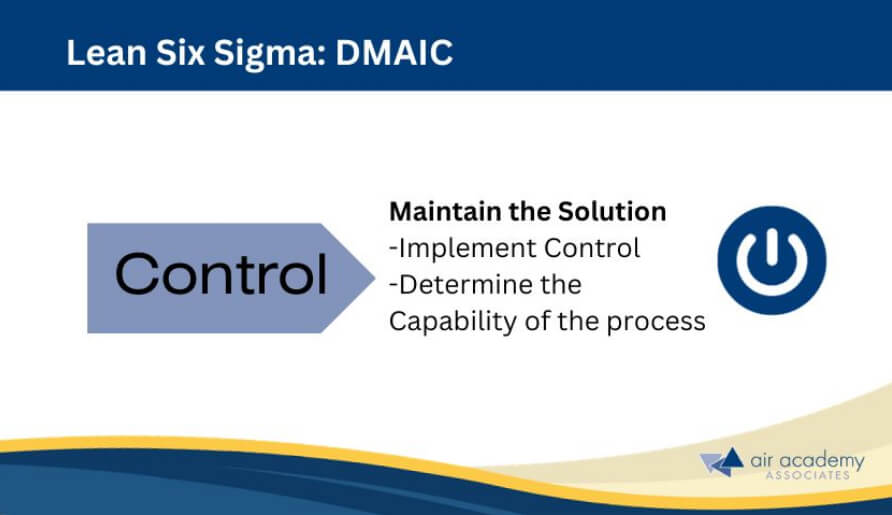
The final Control phase aims to sustain the gains and institutionalize the improvements. This is achieved through:
- Statistical process control monitoring,
- Updated standard operating procedures (SOPs),
- Ongoing training,
- Performance management,
- Controls plan
- Documentation
Controlling the improved process ensures stability and also prepares for potential risks. The gains can then be leveraged to work on further improvement cycles.
DMAIC Project Examples
Let’s look at some examples of how DMAIC can be applied to improve different business processes:
Reducing Online Order Errors
- Define: High error rate in online orders leading to customer dissatisfaction
- Measure: 15% of online orders have inaccuracies due to data entry issues
- Analyze: The data entry process has no validation checks or automation
- Improve: Implement form validation controls and auto-fill to prevent errors
- Control: Update SOPs, training, and quality audits to sustain fix
Improving Invoice Processing Time
- Define: Invoice processing takes over 5 days, leading to payment delays
- Measure: Manual workflow takes 10 hours with 5 process steps
- Analyze: Many non-value-added review and approval steps
- Improve: Simplify process, remove 3 approval levels, implement RPA
- Control: Revise policies and training, monitor cycle time KPI
Reducing Manufacturing Defects
- Define: High defect rate in produced units driving rework costs
- Measure: The baseline defect rate is 8% or 35,000 defects per month
- Analyze: Machine calibration issues and inconsistent operator training
- Improve: Standardize calibration process, improve training program
- Control: Statistical process control, visual aids, poka yoke devices
These examples illustrate how DMAIC provides an end-to-end method for process enhancement. The principles can be tailored and applied to diverse business processes and functions.
Lean Six Sigma belts and DMAIC
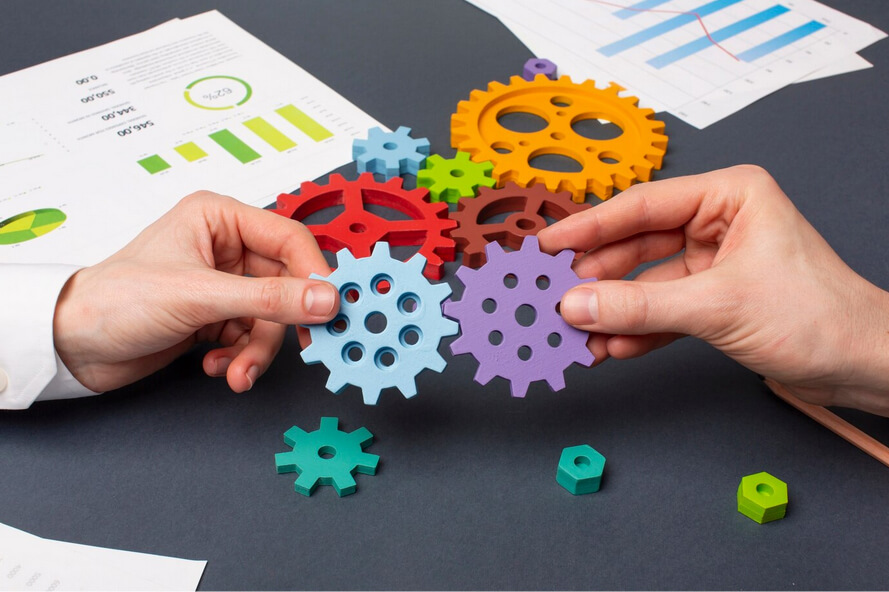
Image Source: Freepik
Six Sigma establishes certification levels to recognize expertise. Key roles include:
- Champions: Senior leaders who sponsor and empower improvement initiatives.
- Master Black Belts: Experts who train and mentor Black Belts.
- Black Belts: Full-time specialists in Six Sigma methodologies like DMAIC who lead projects.
- Green Belts: Part-time Six Sigma practitioners working on projects in their usual roles.
Black Belts and Green Belts are trained in the DMAIC methodology. They lead cross-functional teams through the end-to-end process of defining, measuring, analyzing, improving, and controlling.
Master Black Belts coaches Black Belts to select suitable projects, lead the team effectively, and achieve desired gains. Champions help align projects to strategic goals and provide resources and oversight.
This infrastructure of belts and champions ensures the Six Sigma methodologies are properly implemented across the organization. DMAIC provides a common language for process improvement.
Benefits of Using DMAIC

Image Source: Freepik
Adopting the DMAIC methodology offers numerous benefits:
Provides a Structured Framework
DMAIC establishes a clear project roadmap from beginning to end. The five-phase approach provides logical steps to follow versus vague or ad-hoc efforts.
The rigor and discipline of DMAIC drive consistency and focus. Teams are aligned on the stages needed to achieve impactful and sustainable gains.
Promotes Data-Driven Decisions
A core strength of DMAIC is its emphasis on data. Metrics and statistical analysis guide decision-making versus gut instinct or anecdotes. This leads to objective conclusions about root causes and priorities.
The Measure and Analyze steps focus on understanding processes as they are. Data reveals vital insights that can be overlooked otherwise.
Prioritizes High-Impact Changes
DMAIC helps teams select solutions with the greatest potential impact by first identifying vital few causes. This prevents wasting time on minor factors and drives efficiency.
Improvements can be tested and piloted first before scaling. Resources stay focused on changes that matter most to customers and the business.
Sustains Improvements Over Time
The Control phase builds capabilities to sustain gains in the long run. This prevents backsliding, which commonly erodes one-off improvements.
Control plans monitor vital metrics, embed skills through training, and institutionalize effective solutions through documentation.
Develops Capabilities and Culture
DMAIC isn’t just used to improve individual processes. By standardizing problem-solving, it builds business-wide skills for ongoing improvement.
Training Black Belts and Green Belts seeds capabilities throughout the organization. A culture of data-driven improvement takes root.
Drives Customer-Centric Thinking
A key focus across DMAIC is enhancing value for customers – both internal and external. Removing defects and wait times while smoothing workflow boosts satisfaction.
The metrics collected highlight areas customers care about most, like quality, speed, reliability, and service. DMAIC keeps customer needs front and center.
Provides Flexibility
While DMAIC provides structure, it also offers flexibility. Tools and analysis can be tailored to each unique problem and situation. The high-level methodology remains consistent while the tactics adapt.
No two projects need to implement DMAIC in the same way. Teams have the freedom to select appropriate tools.
Challenges of DMAIC
While powerful, DMAIC also comes with some challenges to be aware of:
- Time Commitment – Projects require significant time, often 3-6 months. This level of effort must be budgeted.
- Complex Analysis – There can be a steep learning curve around statistical tools and analysis for novices.
- Sustaining Improvements – The Control phase is often neglected. Without monitoring and controls, old ways can creep back in.
- Technical Focus – Over-indexing on data can miss the human elements of change, like culture and engagement.
- No Magic Bullet – DMAIC provides structure, but practitioner expertise is vital for success. The methodology alone doesn’t guarantee results.
Awareness of these common pitfalls allows teams to proactively address them through planning, training, engagement, and oversight.
DMAIC vs. Other Methodologies
DMAIC is not the only process improvement methodology. How does it compare?
DMAIC vs. PDCA
PDCA (Plan-Do-Check-Act) is another common improvement framework. It shares some similarities with DMAIC but has key differences:
- PDCA is more high-level with broader stages, while DMAIC provides more detailed steps.
- DMAIC emphasizes data-driven decisions and statistical rigor over PDCA.
- PDCA iterates quickly, while DMAIC comprehensively analyzes the root cause upfront before improving.
- DMAIC includes control plans for sustainability, whereas PDCA focuses on the change.
Both methodologies have their place. PDCA offers simplicity for lightweight changes. For more complex initiatives, DMAIC provides added depth and analytics.
DMAIC vs. Design Thinking
Design Thinking follows a cycle of Empathize, Define, Ideate, Prototype, and Test. Key differences include:
- Design Thinking starts with understanding user needs, while DMAIC begins by defining the process.
- DMAIC relies on data and statistics, while Design Thinking utilizes user feedback and interviews.
- Design Thinking is about innovative solutions vs. optimizing processes for DMAIC.
- DMAIC proves results quantitatively, whereas testing is more qualitative for Design Thinking.
Design Thinking excels at developing creative new products and services. DMAIC is ideal for incrementally improving established processes. The methods can complement each other.
DMAIC vs. Agile
Agile emphasizes flexibility and adapting to change. DMAIC contrasts with its linear approach and rigorous data analysis. Key differences:
- Agile welcomes changing requirements while DMAIC locks down scope upfront.
- DMAIC invests more time in upfront research, while Agile favors just-in-time information.
- Agile iterates rapidly, while DMAIC proceeds sequentially through phases.
- Agile utilizes minimum viable products, while DMAIC relies on piloting and proof of concept.
Agile works well for software development and creative endeavors that require skill. DMAIC excels when rigor and repeatability are critical for success.
Integrating DMAIC with Other Methodologies
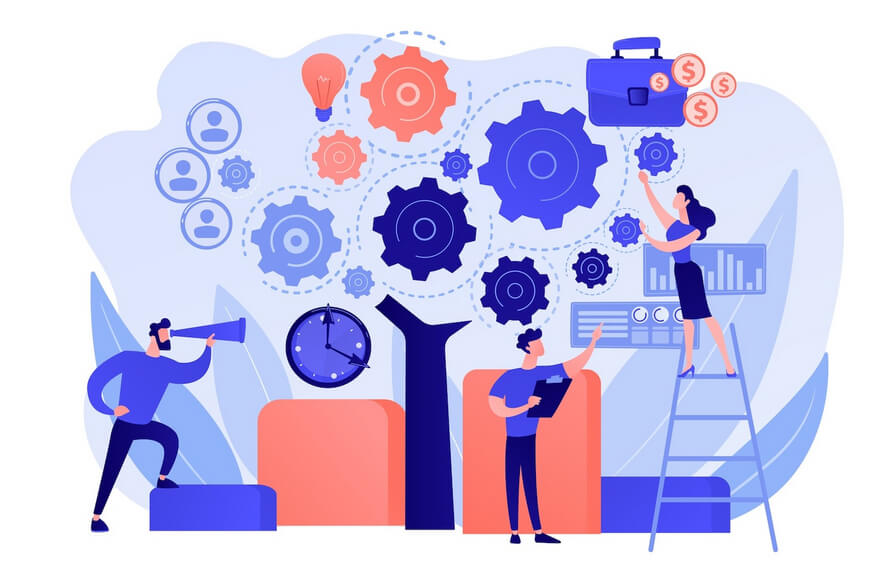
Image Source: Freepik
Rather than a single solution, today’s problems often require combining methods like Lean, Six Sigma, Agile, and Design Thinking.
For instance, Lean concepts like waste reduction can power the improvement phase of DMAIC. Human-centered design may inform solution development. Agile sprints can execute the changes.
This “best of breed” approach allows teams to leverage multiple frameworks as appropriate. DMAIC provides an overarching structure while other methods fill gaps.
Careful integration is needed to ensure cohesion and prevent conflict between mismatched approaches. But thoughtfully combining methods can yield powerful results.
Tips for Implementing DMAIC Successfully
Here are some best practices to drive success with DMAIC:
- Secure management commitment and resources before launching projects
- Prioritize issues tied to strategic goals with clear payback potential
- Assemble cross-functional teams, blending technical and domain experts
- Invest in training Black Belts and Green Belts on DMAIC rigorously
- Use project charters to formalize objectives, scope, roles, and timelines
- Collect reliable data using statistical tools like gauges R&R
- Validate root causes with layered analysis tools like 5 Whys
- The pilot proposed improvements first on a small scale to test the efficacy
- Implement controls like audits, SPC, and logs to sustain improvements
- Recognize and share success stories throughout the organization
- Continuously improve the DMAIC methodology itself
Following these guidelines helps avoid common pitfalls and unlocks the full potential of the DMAIC approach.
DMAIC Process Maturity Model
Like any capability, organizations develop DMAIC expertise over time. The level of process maturity with DMAIC can be evaluated across five stages:
- Initial – No structured problem-solving methodology. Ad hoc efforts.
- Defined – DMAIC introduced. Inconsistent usage and results.
- Capable – Standards formalized. Successful projects but still variable.
- Efficient – Consistent usage across projects and functions. Skilled Black Belts.
- Best in Class – Data-driven mindset fully embedded. Continual improvement.
Assessing an organization’s current stage on this spectrum helps target training and capability building to instill DMAIC rigor. The highest-performing companies fully integrate DMAIC to drive lasting cultural change.
Sustaining DMAIC Beyond Individual Projects

Image Source: Freepik
A common pitfall is viewing DMAIC as a one-off project tool rather than an engine for ongoing improvement. To sustain gains:
- Continue monitoring critical metrics from past projects and act on deviations
- Build DMAIC responsibilities into job roles like Black Belts
- Train new employees on DMAIC principles
- Adapt standards but allow customization as needed
- Review lessons learned after projects to refine the approach
- Celebrate and share DMAIC success stories across the company
- Make DMAIC mastery a key competency in performance reviews
- Utilize dashboards and visibility tools to track portfolio performance
- Don’t simply emulate competitors – leapfrog them through innovation
Institutionalizing DMAIC not only sustains results but continuously lifts performance to new heights.
Conclusion
The DMAIC methodology provides a proven framework to tackle process improvement systematically. Mastering the five phases of Define, Measure, Analyze, Improve, and Control allows organizations to drive impactful change.
However, DMAIC is not a silver bullet. Deep expertise and rigorous application are required to deliver results. Too often, companies apply the tools superficially.
To champion ongoing improvement with DMAIC:
- Invest in thorough training and project oversight
- Integrate DMAIC into strategy and operations
- Motivate change by connecting to real business impact
- Sustain gains through controls and capability building
With commitment and know-how, the well-established DMAIC approach can optimize nearly any process. The data-driven rigor separates true quality leaders from mediocre performers.
Take your knowledge of DMAIC to the next level with Air Academy Associates’ Online Black Belt Training. Enroll to become a certified Lean Six Sigma Black Belt and drive process excellence!


